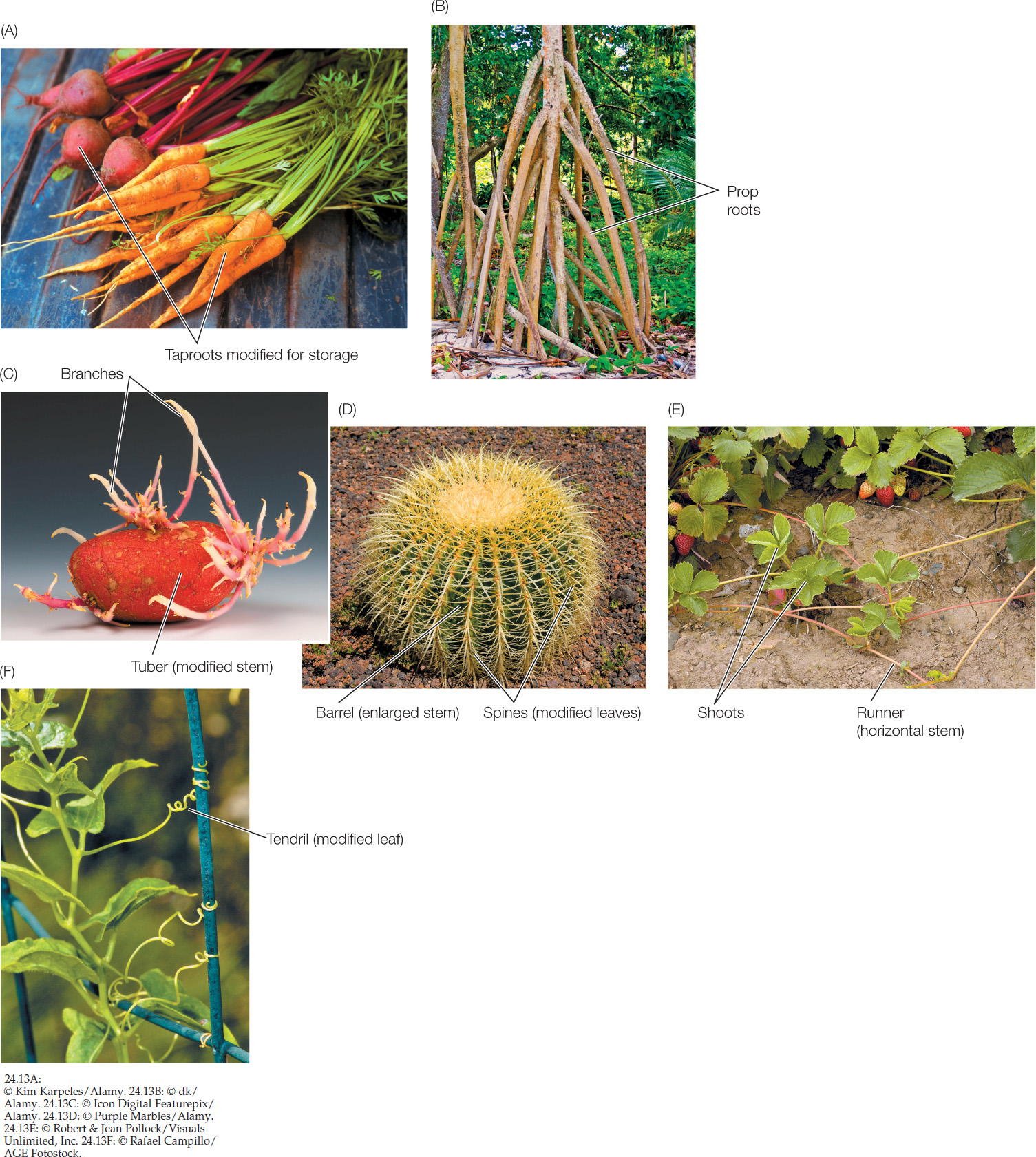
Figure 24.13: Modified Roots, Stems, and Leaves (A) The taproots of some eudicots, such as carrots (Daucus carota) and sugar beets (Beta vulgaris), are nutrient storage organs. (B) The stems of this hala tree (Pandanus tectorius), a monocot, are supported by prop roots. (C) A potato (Solanum tuberosum) is a modified stem called a tuber; the sprouts that grow from its eyes are shoots, not roots. (D) The stem of this barrel cactus (Echinocactus grusonii) is enlarged to store water. Its highly modified leaves serve as thorny spines. Most of this plant’s photosynthesis occurs in the stem. (E) The runners of strawberries (Fragaria sp.) are horizontal stems that produce roots and shoots at intervals. Rooted portions of the plant can live independently if the runner is cut. (F) The tips of some leaves, as in this red bryony vine (Bryonia dioica), are modified into tendrils.